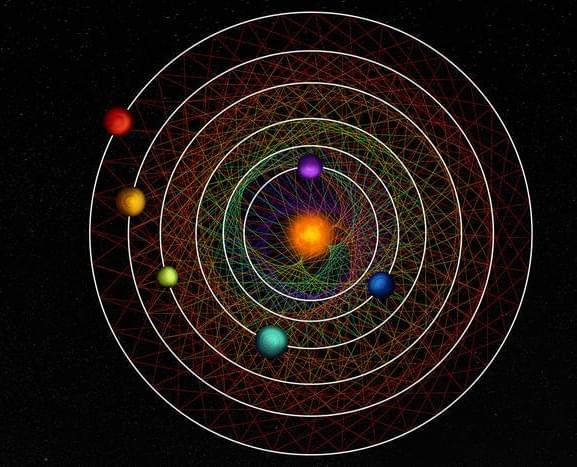Qi et al. used phage-assisted evolution to optimize SlugCas9, a compact Cas9 nuclease, for NNG PAM recognition and developed a SlugCas9-NNG based adenine base editor for single AAV delivery.



An international team led by researchers at the University of Toronto has uncovered over 100 genes that are common to primate brains but have undergone evolutionary divergence only in humans—and which could be a source of our unique cognitive ability.
The researchers, led by Associate Professor Jesse Gillis from the Donnelly Center for Cellular and Biomolecular Research and the department of physiology at U of T’s Temerty Faculty of Medicine, found the genes are expressed differently in the brains of humans compared to four of our relatives—chimpanzees, gorillas, macaques and marmosets.
The findings, published in Nature Ecology & Evolution, suggest that reduced selective pressure, or tolerance to loss-of-function mutations, may have allowed the genes to take on higher-level cognitive capacity. The study is part of the Human Cell Atlas, a global initiative to map all human cells to better understand health and disease.

Dr. McKinney noted, “With JWST, we can study for the first time the optical and infrared properties of this heavily dust-obscured, hidden population of galaxies because it’s so sensitive that not only can it stare back into the farthest reaches of the universe, but it can also pierce the thickest of dusty veils.”
Did galaxies produce stars in the early universe? This is what a recent study published in The Astrophysical Journal hopes to unveil as a team of international researchers analyze data from NASA’s James Webb Space Telescope (JWST) about a star-forming galaxy called AzTECC71 that existed approximately 900 million years after the Big Bang. What makes this discovery unique is that AzTECC71 is hidden behind a fair amount of dust which initially fooled astronomers to hypothesize that it’s not very big. How astronomers now hypothesize that AzTECC71 was producing a plethora of new stars despite its young age, which challenges previous notions of the formation and evolution of galaxies so soon after the Big Bang.
Color composite image of the galaxy, AzTECC71, which astronomers estimate existed approximately 900 million years after the Big Bang. This image was made using multiple color filters as part of the James Webb Space Telescope’s NIRCam instrument. (Credit: J. McKinney/M. Franco/C. Casey/University of Texas at Austin)
“This thing is a real monster,” said Dr. Jed McKinney, who is a postdoctoral researcher at The University of Texas at Austin and lead author of the study. “Even though it looks like a little blob, it’s actually forming hundreds of new stars every year. And the fact that even something that extreme is barely visible in the most sensitive imaging from our newest telescope is so exciting to me. It’s potentially telling us there’s a whole population of galaxies that have been hiding from us.”

Can planets form under extreme conditions, such as high levels of ultraviolet radiation? This is something a recent study published in The Astrophysical Journal Letters hopes to find out as a team of international researchers used data obtained from NASA’s James Webb Space Telescope (JWST) as part of the eXtreme Ultraviolet Environments (XUE) JWST program to study the formation and evolution of young planetary systems. This particular study, known as XUE 1, focuses on the star cluster Pismis 24, with the team identifying some key ingredients for life as we know it.
Artist rendition of a protoplanetary disk where planets are forming around a young star. (Credit: ESO/L. Calçada)
“We find that the inner disk around XUE 1 is remarkably similar to those in nearby star-forming regions,” said Dr. Rens Waters, who is a professor of astrophysics at Radboud University in the Netherlands and a co-author on the study. “We’ve detected water and other molecules like carbon monoxide, carbon dioxide, hydrogen cyanide, and acetylene. However, the emission found was weaker than some models predicted. This might imply a small outer disk radius.”
Good telescope that I’ve used to learn the basics: https://amzn.to/35r1jAk.
Get a Wonderful Person shirt: https://teespring.com/stores/whatdamath.
Alternatively, PayPal donations can be sent here: http://paypal.me/whatdamath.
Hello and welcome! My name is Anton and in this video, we will talk about the incredible effects gut microbiome has on our body.
Links:
https://www.clarkson.edu/news/microbes-gut-might-affect-pers…s-research.
https://www.smithsonianmag.com/smart-news/fecal-transplants-…180978416/
https://www.nature.com/articles/s41586-021-03532-0
https://www.nature.com/articles/s43587-021-00093-9
https://en.wikipedia.org/wiki/Gut%E2%80%93brain_axis.
https://en.wikipedia.org/wiki/Gut_microbiota.
https://www.mdpi.com/2072-6643/14/3/466
#microbiome #gut #bacteria.
0:00 Gut Microbes Intro.
0:55 You are what you eat…on an entirely different level.
1:55 Gut Brain communication.
2:50 Important functions.
3:35 Additional function we never knew about.
4:10 Surprising diversity of genes.
5:10 Modern evolution and how it affected bacteria.
6:10 It was different in ancient humans.
8:10 Even more surprising discoveries from mice — poop transplants.
10:25 Affects our brains and our mood.
11:50 Even changes our personalities?!
Support this channel on Patreon to help me make this a full time job:
https://www.patreon.com/whatdamath.
Bitcoin/Ethereum to spare? Donate them here to help this channel grow!
bc1qnkl3nk0zt7w0xzrgur9pnkcduj7a3xxllcn7d4
or ETH: 0x60f088B10b03115405d313f964BeA93eF0Bd3DbF
Space Engine is available for free here: http://spaceengine.org.

Protein-like aggregates known as amyloids can bind to molecules of genetic material. It is possible that these two types of molecules stabilized each other during the development of life—and that this might even have paved the way for the genetic code.
How organisms develop from inanimate matter is one of the biggest questions in science. Although many possible explanations have been proposed, there are no definitive answers. That’s no surprise: these processes took place 3 billion to 4 billion years ago, when the conditions on Earth were completely different from today.
“Over this vast period of time, evolution has thoroughly obliterated the traces that lead back to the origins of life,” says Roland Riek, professor of physical chemistry and associate director of ETH Zurich’s new interdisciplinary Center for Origin and Prevalence of Life. Science has no choice but to formulate hypotheses—and to substantiate them as thoroughly as possible with experimental data.

Noting that some theropod dinosaurs had large brains, large grasping hands, and likely binocular vision, paleontologist Dale Russell suggested that a branch of these dinosaurs might have evolved to a human intelligence level, had dinosaurs not become extinct. I offer reasons why the likely pallial organization in dinosaurs would have made this improbable, based on four assumptions. First, it is assumed that achieving human intelligence requires evolving an equivalent of the about 200 functionally specialized cortical areas characteristic of humans. Second, it is assumed that dinosaurs had an avian nuclear type of pallial organization, in contrast to the mammalian cortical organization. Third, it is assumed that the interactions between the different neuron types making up an information processing unit within pallium are critical to its role in analyzing information. Finally, it is assumed that increasing axonal length between the neuron sets carrying out this operation impairs its efficacy. Based on these assumptions, I present two main reasons why dinosaur pallium might have been unable to add the equivalent of 200 efficiently functioning cortical areas. First, a nuclear pattern of pallial organization would require increasing distances between the neuron groups corresponding to the separate layers of any given mammalian cortical area, as more sets of nuclei equivalent to a cortical area are interposed between the existing sets, increasing axon length and thereby impairing processing efficiency. Second, because of its nuclear organization, dinosaur pallium could not reduce axon length by folding to bring adjacent areas closer together, as occurs in cerebral cortex.
Keywords: avian brain; axonal length; connectivity; dinosaur evolution; humans; intelligence; troodon.
© 2023 The Authors. The Journal of Comparative Neurology published by Wiley Periodicals LLC.

A recent study published in Nature discusses the confirmation of an exoplanetary system based on data collected in 2020. The system, known as HD 110,067, possesses six planets whose orbits are in resonance with each other, or “in sync”, meaning which could offer profound insights into the formation and evolution of planetary systems throughout the cosmos. All the planets exhibit sizes between Earth and Neptune, also known as sub-Neptunes, and was conducted by an international team of researchers using data from NASA’s Transiting Exoplanet Survey Satellite (TESS) and the European Space Agency’s CHaracterising ExOPlanet Satellite (Cheops).
Artist illustration of the planets within the HD 110,067 system exhibiting orbital resonances with the colored lines depicting their resonances with each other. (Credit: CC BY-NC-SA, Thibaut Roger/NCCR PlanetS)
“This discovery is going to become a benchmark system to study how sub-Neptunes, the most common type of planets outside of the solar system, form, evolve, what are they made of, and if they possess the right conditions to support the existence of liquid water in their surfaces,” said Dr. Rafael Luque, who is a Postdoctoral Scholar in the Department of Astronomy and Astrophysics at the University of Chicago and lead author of the study.

Similar to human teenagers, teenage galaxies are awkward, experience growth spurts and enjoy heavy metal — nickel, that is.
A Northwestern University-led team of astrophysicists has just analyzed the first results from the CECILIA (Chemical Evolution Constrained using Ionized Lines in Interstellar Aurorae) Survey, a program that uses NASA’s James Webb Space Telescope (JWST) to study the chemistry of distant galaxies.
According to the early results, so-called “teenage galaxies” — which formed two-to-three billion years after the Big Bang — are unusually hot and contain unexpected elements, like nickel, which are notoriously difficult to observe.
